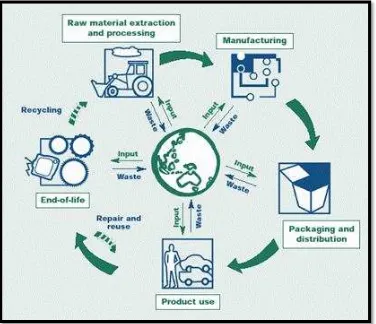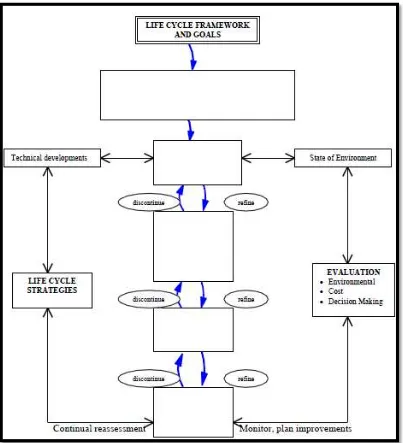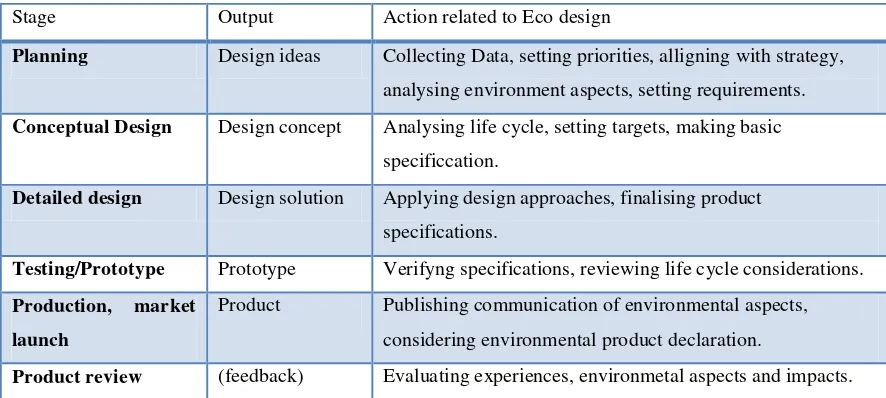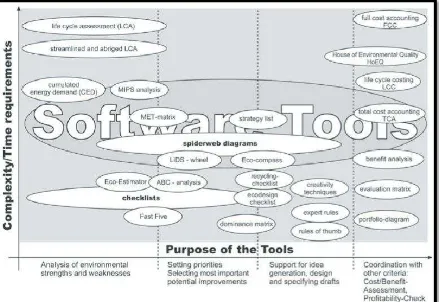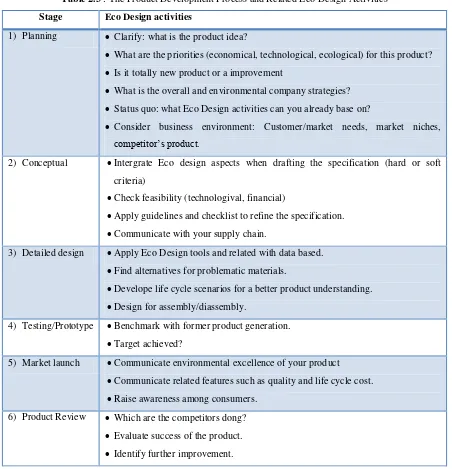UNIVERSITI TEKNIKAL MALAYSIA MELAKA
TO STUDY THE END OF LIFE COASTAL BOAT USING
DESIGN SUSTAINABILITY METHOD
This report submitted in accordance with requirement of the Universiti Teknikal Malaysia Melaka (UTeM) for Bachelor Degree of Manufacturing Engineering
(Design) (Hons.)
By
AFFENDY BIN MOHD SALEH
B051010168
870730085595
FACULTY OF MANUFACTURING ENGINEERING
UNIVERSITI TEKNIKAL MALAYSIA MELAKA
BORANG PENGESAHAN STATUS LAPORAN PROJEK SARJANA MUDA
TAJUK:TO STUDY THE END OF LIFE COASTAL BOAT USING DESIGN SUSTAINABILITY METHOD
SESI PENGAJIAN: 2013/14-Semester 2
Saya AFFENDY BIN MOHD SALEH
mengaku membenarkan Laporan PSM ini disimpan di Perpustakaan Universiti Teknikal Malaysia Melaka (UTeM) dengan syarat-syarat kegunaan seperti berikut: 1. Laporan PSM adalah hak milik Universiti Teknikal Malaysia Melaka dan penulis. 2. Perpustakaan Universiti Teknikal Malaysia Melaka dibenarkan membuat salinan
untuk tujuan pengajian sahaja dengan izin penulis.
3. Perpustakaan dibenarkan membuat salinan laporan PSM ini sebagai bahan pertukaran antara institusi pengajian tinggi. atau kepentingan Malaysia sebagaimana yang termaktub dalam AKTA RAHSIA RASMI 1972)
(Mengandungi maklumat TERHAD yang telah ditentukan oleh organisasi/badan di mana penyelidikan dijalankan)
Alamat Tetap:
DECLARATION
I hereby, declared this report entitled “To Study the End of Life Coastal Boat using Design Sustainability Method” is the results of my own research except as cited in
references.
Signature : ………
Author’s Name : AFFENDY BIN MOHD SALEH
APPROVAL
This report is submitted to the Faculty of Manufacturing Engineering of UTeM as a partial fulfillment of the requirements for the degree of Bachelor of Manufacturing
Engineering (Design) (Hons.). The members of the supervisory committee are as follow:
………
i
ABSTRAK
ii
ABSTRACT
iii
DEDICATION
iv
ACKNOWLEDGEMENT
In the name of Allah, Most Gracious, Most Compassionate. Praise be to Allah. With His kindness, here I present final year project report.
Firstly, I would like to express my infinite thanks to my final year project supervisor, Mr. Baharudin bin Abu Bakar, for all the guidance, encouragement, ideas and useful advice in order to finish my final year project report. I also would like to present my thankfulness to my lecturer Engr. Dr. Hambali bin Arep @ Ariff for the help and useful guidance.
My highly gratitude to my beloved parents, Mr. Mohd Saleh bin Lajis and Mdm. Wan Salmah binti Wan Chik,, my siblings for all the moral support for me to finish my final year project. Thank you very much for your prayers for me. Last but not least, for those who contributed in my journey of education either directly or indirectly, thank you very much.
1
CHAPTER 1
INTRODUCTION
1.0 Background
Eco Design is known as ecology or environmental based design method to emphasize the importance of green sustainability. It is also known by other names as Design for Environment (DFE), Green Design, Sustainable Design, Environment Concious Design, Life Cycle Design, Life Cycle Engineering and Clean Design have same goals and objective. It can be defined as approach that consider all the environmental impacts of a product right from the earliest stage of its design and throughout product development process by systematic way and encountered with other traditional approach such as function, safety, ergonomic, endurance, quality, and cost. This is stated in ISO 14062, that integrating environmental aspects into product development is able to minimize the total environmental impact in a life cycle perspective from raw material extraction, production, packaging, distribution, use, recovery and recycling
This chapter describes the general terms that will be implemented in this project. It covers the background of the problem, objectives, scope, and significant and research methodology that influence the sustainability.
2
Nowadays, it is growing responsibility and understanding of our ecological footprint on the planet. Besides that, Green awareness, over population, industrialization and an increased environmental population has led to the questioning of consumer values. It is imperative to search for new manufacturing solutions that are environmentally friendly and lead to a reduction in the consumption of materials and energy.
1.1 Statement of the problem
Today‟s challenge is to develop the Coastal Boat Body that balancing of the impact of the
Eco Design Sustainability concept. There are several methods in making the Coastal Boat body that suitable in Eco Design concept which are using different type of analysis. The
boat designer‟s challenge is determine the Eco Design concept that will affect the Environment Impact and Transportation Impact. Usually, the problem comes when choosing the wrong material to sustain the End of Life Cycle.
This analysis must reflect the tight economic situation that is present to the material selection that involved:
1. Increased operational costs, fuel, and etc.
2. Reduced financial resources for updating or rebuilding coastal boats.
1.2 Objective of the study
The objectives of this project are:
1. To choose the right material in making Coastal Boat body that focus on Environment Impact and Transportation Impact.
3
1.2 Scope of the study
This research project will focuses on tools, methods and strategy that employed in Eco Design that consider all the environmental impacts of a product right from the earliest stage of its design and throughout product development process until end of life of product by systematic way.
In this study, there are important thing to focus on:
To choose right material to build Coastal Boat Body.
4
CHAPTER 2
LITERATURE REVIEW
2.0 Introduction
This chapter will discuss briefly about the available ideas and implementation of suitable methods used in order to complete this project. Literature review is the phase where all the processes happen such as searching, collecting, and analyzing that has been done or published by another researcher. All of the process can be completed through relevant sources such as book, journal, and technical report, proceeding conferences, web pages and others. Research findings from readings, observing and gather all the information related to the previous project will be include to gain the knowledge about the tools used. Literature review could be main references guidance in the process of making this project. To have a brief understanding of the researches related to the project.
2.1 The History of Eco Design
5
production technologies working much more efficiently and very soon helped to reduce the consumption of resources, thus lowering production cost. Manufacturers therefore directly felt the benefits of greening their processes. In contrast, the Eco Design of products turned out to be a more complex challenge. It is potential ecological and economic impacts or advantages go beyond the reach of the manufacturer (Boks, 2006).
Table 2.1 : Facts of Eco Design (Boks, 2006). 12 Facts of Eco Design
1. Use product design to educate on the environment. 2. Make it durable.
3. Make it easy to repair.
4. Design it so it can be remanufactured. 5. Design it so it can be refused. 6. Use recycled materials.
7. Use commonly recyclable materials.
8. Make it simple to seperate the recyclable components of a product from the non-recyclable components.
9. Eliminate the toxic component of a product or make them easy to replace or remove before disposal. 10. Make products more energy or resource efficient.
11. Work toward designing source reduction-inducing products which are the products that eliminate the need for subsequent waste.
12. Adjust product design to reduce packaging.
2.2 Eco Design Current Statuses
6
end-of life. In details, Eco Design, that aims at integrating environmental aspects during
the product‟s design process as any other criterion has been strongly developing and maturing. Today, although it is quite a well-known concept in the manufacturing industry, it is not widely and routinely implemented and it should be further elaborated to reach its full potential. (Maud Dufrene, Peggy Zwolinski and Daniel Brissaud, 2013)
2.3 A Life Cycle Approach
Just like living organisms, products have a Life Cycle as well. Where living organisms originate, reproduce, and eventually die, products are produced from raw materials, used
by consumers, and eventually disposed of. A product‟s life cycle is generally broken down into stages.
The number of stages can vary. Six stages are often distinguished in figure 2.1: 1) Product design,
2) Raw material extraction and processing, 3) Manufacturing of the product,
4) Packaging and distribution to the consumer, 5) Product use and maintenance,
6) End-of-life management: reuse, recycling and disposal.
7
Figure 2.1: Stages of a Products Life Cycle (Edith et.al, 2012).
2.4 Cradles-to-Cradle Development
8
Cradle-to-cradle design has also been described as a business strategy and it is approach to design aims to restore the health of water, soil and the atmosphere. It eliminates the idea of waste by proposing that waste can equal food. This moves from a paradigm of cradle-to-grave, which is a linear use of resource resulting in waste, to one with a cyclic use of resource eliminated waste. The cradle-to-cradle future of industry is seen to be a
„world of abundance‟ rather than one of limits (William McDonough, EXPO 2000)
2.5 Eco Efficiency Approach
The term Eco Efficiency was based on the concept of creating more goods and services while using fewer resources and producing less waste and pollution. Eco Efficiency is achieved through the delivery of ‘competitively priced goods and services that satisfy human needs and bring quality of life while progressively reducing environmental impacts of goods and resource intensity throughout the entire life cycle to a level at least
in line with the Earth‟s estimated carryingcapacity‟ (DeSimone et al, 2000).
The starting point for Eco Efficiency is minimizing the waste, pollution and natural resource depletion. Their approach is a carrying capacity approach where it is focused on reducing the footprint of activities and, in particular, delivery of goods and services, while still satisfying human needs. Ultimately Eco Efficiency looks to neutralise the effects of development by achieving a steady state between the resources used and the resources remaining. It does not seek to achieve positive environmental outcomes (Birkelan, 2002).
2.6 Life Cycle Design Principles
According to the Life Cycle Design Guidance Manual (F.Giudice, G. La Rosa and A. Ristino, 2002), there are three main principles for guiding environmental improvement of product systems in life cycle design:
9
2) Multicriteria Analysis for identifying and evaluating environmental, performance, cost, cultural, and legal requirements
3) Multistakeholder Participation and cross-functional teamwork throughout design.
2.7 Life Cycle Design Process
After building an interdisciplinary multistakeholder life cycle team, understanding and integration of life cycle thinking, and development of life cycle design goals and principles, life cycle design process should be elaborated (Koeleian and Menerey ,1993), have elaborated and offered a useful plan to build Life Cycle Design Process (Figure 2.2) that consists of six main steps:
1) Developing of Life Cycle Framework and Goals.
2) Building Life Cycle Team and Elaborating Strategies and Policies. 3) Analyzing needs of Stakeholders (Stakeholders Management). 4) Setting Life Cycle Design Requirements.
10
Figure 2.2 : Flow Chart: Life Cycle Design Process (Keoleian and Menerey, 1993)
11
2.8 Goals of Eco Design
Eco Design aims at reducing the harmful environmental impacts of a product during its
whole life cycle. This objective can be divided into five main goals (Kärnä, 2002):
1) Efficient use of materials
2) Minimising energy consumption
3) Minimising the use of substances harmful to health or the environment
4) Optimizing the product lifetime
5) Improving recyclability
2.8.1 Design Approaches
Each organisation should consider the suitability of the different design
approaches for their environmental objectives. Examples of design approaches
are:
Materials: environmental impacts of using less materials, low impact materials, renewable materials or recycled materials.
Durability: life span, reparation and maintenance, improvements of new
technologies
Functionality: multiple functions, modularity and automation
Re-use: easy disassembly, reduced material complexity, use of recycled materials
Hazardous substances: minimising the negative effects to health, safety and
environment including transports.
2.9 Tools of Eco Design
There are many tools that can be used in related with eco design concept. The tools can
help decision-making, development of measurement methods, analysis of environmental
12
Table 2.2 : Typical Stages of Product Design and Development Process (ISO, 2002, Enroth 2001)
Stage Output Action related to Eco design
Planning Design ideas Collecting Data, setting priorities, alligning with strategy, analysing environment aspects, setting requirements.
Conceptual Design Design concept Analysing life cycle, setting targets, making basic specificcation.
Detailed design Design solution Applying design approaches, finalising product specifications.
Testing/Prototype Prototype Verifyng specifications, reviewing life cycle considerations.
Production, market launch
Product Publishing communication of environmental aspects, considering environmental product declaration.
Product review (feedback) Evaluating experiences, environmetal aspects and impacts.
Examples of these tools include the following (ISO, 2002, Enroth 2001):
• Decision-making tools such as matrices, checklists, Pareto diagrams, SWOT
analyses, spider web diagrams
• Benchmarking tools based on physical quantities or environmental factors
• Product development tools that often used in quality management such as QFD
(Quality Function Deployment) and FMEA (Failure Mode and Effects Analysis)
• Tools based on life cycle approach, like LCA (Life Cycle Analysis), LCC (Life
Cycle Costing), SolidWork Sustainability, MFA (Material Flow Analysis) and CERA
(Cumulative Energy Requirements Analysis).
• Other tools like hazard and risk assessment and stakeholder benefits and feasibility
analysis. Many of the tools listed above are included in a presentation which
classifies the tools in terms of complexity and purpose of application. (Tischner et al ,
13
14
Table 2.3 : The Product Development Process and Related Eco Design Activities
Stage Eco Design activities
1) Planning Clarify: what is the product idea?
What are the priorities (economical, technological, ecological) for this product?
Is it totally new product or a improvement
What is the overall and environmental company strategies?
Status quo: what Eco Design activities can you already base on?
Consider business environment: Customer/market needs, market niches, competitor‟s product.
2) Conceptual Intergrate Eco design aspects when drafting the specification (hard or soft criteria)
Check feasibility (technologival, financial)
Apply guidelines and checklist to refine the specification.
Communicate with your supply chain.
3) Detailed design Apply Eco Design tools and related with data based.
Find alternatives for problematic materials.
Develope life cycle scenarios for a better product understanding.
Design for assembly/diassembly.
4) Testing/Prototype Benchmark with former product generation.
Target achieved?
5) Market launch Communicate environmental excellence of your product
Communicate related features such as quality and life cycle cost.
Raise awareness among consumers.
6) Product Review Which are the competitors dong?
Evaluate success of the product.
Identify further improvement.
2.10 Environmental Effect Analysis (EEA)
cross-15
functional teams and provides a qualitative result. The method is carried out in five stages; Preparation, Inventory, Analysis, Implementation, and Follow-up. The EEA is less time consuming and complex than an LCA which was the motive for the development of the method. (Lindahl & Tingström, 2001). EEA was developed based on Failure Mode and Effect Analysis (FMEA), which is a method used for identifying possible ways in which a design could fail, the causes, and their resulting effects. Because of the familiarities with the FMEA, EEA is believed to be easier implemented at a company if the FMEA method is already established. EEA is in literature sometimes referred to as Environmental- FMEA or E-FMEA, but the name was changed to EEA due to legal problems since FMEA was a protected name. (Lindahl and Tingström, 2001)
2.11 Material Flow Analysis
“Material flow analysis (MFA) is a systematic assessment of the flows and stocks of materials within a system defined in space and time.” (Brunner and Rechberger, 2004). The applications of MFA:
2.11.1 Industrial Ecology
1) IE design principles related to MFA:
Controlling pathways for materials use and industrial processes
Creating loop-closing industrial practices
Dematerializing industrial output
Systematizing patterns of energy use
Balancing industrial input and output to natural ecosystem capacity
2) Environmental Management and Engineering
Environmental impact statements
Remediation of hazardous waste sites
Design of air pollution control strategies
16
Planning of soil-monitoring systems
Sewage sludge management
2.12 Life Cycle Assessment
Life Cycle Assessment is the only method that assesses the environmental impacts of a product or activity (a system of products) over its entire life cycle. It is therefore a holistic approach that takes into account:
Extraction and treatment of raw materials
Educational tools services by guiding the decision-making process. For companies, designers, and governments, life cycle assessment represents a decision-making aid tool for implementing sustainable development (Abdul Ghafur, 2007).
2.13 Eco Design in Malaysian Industries
